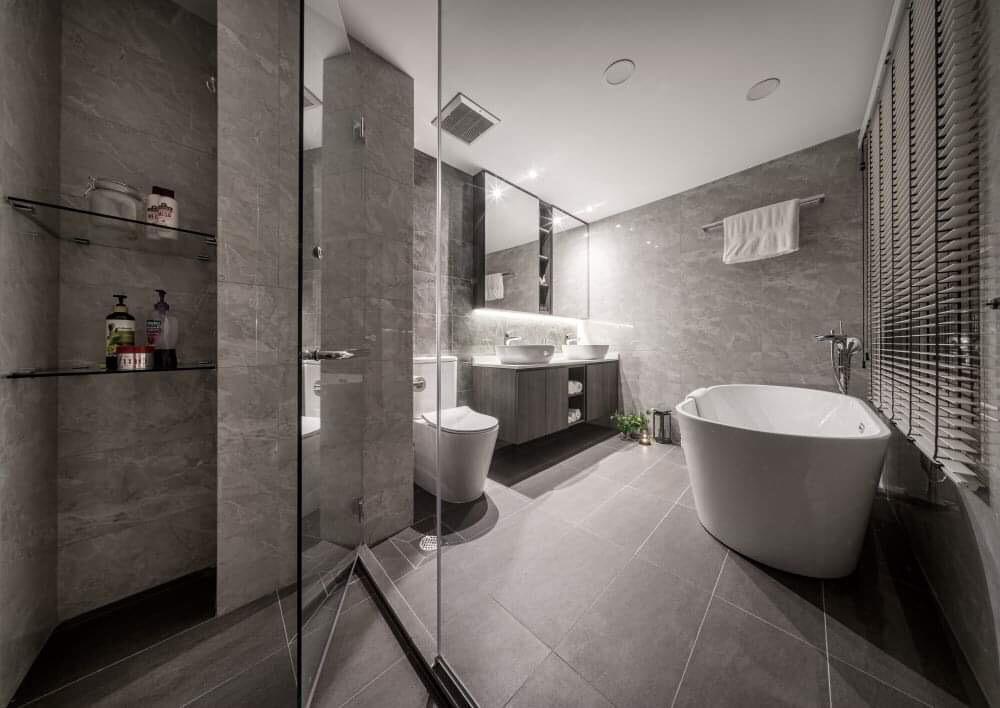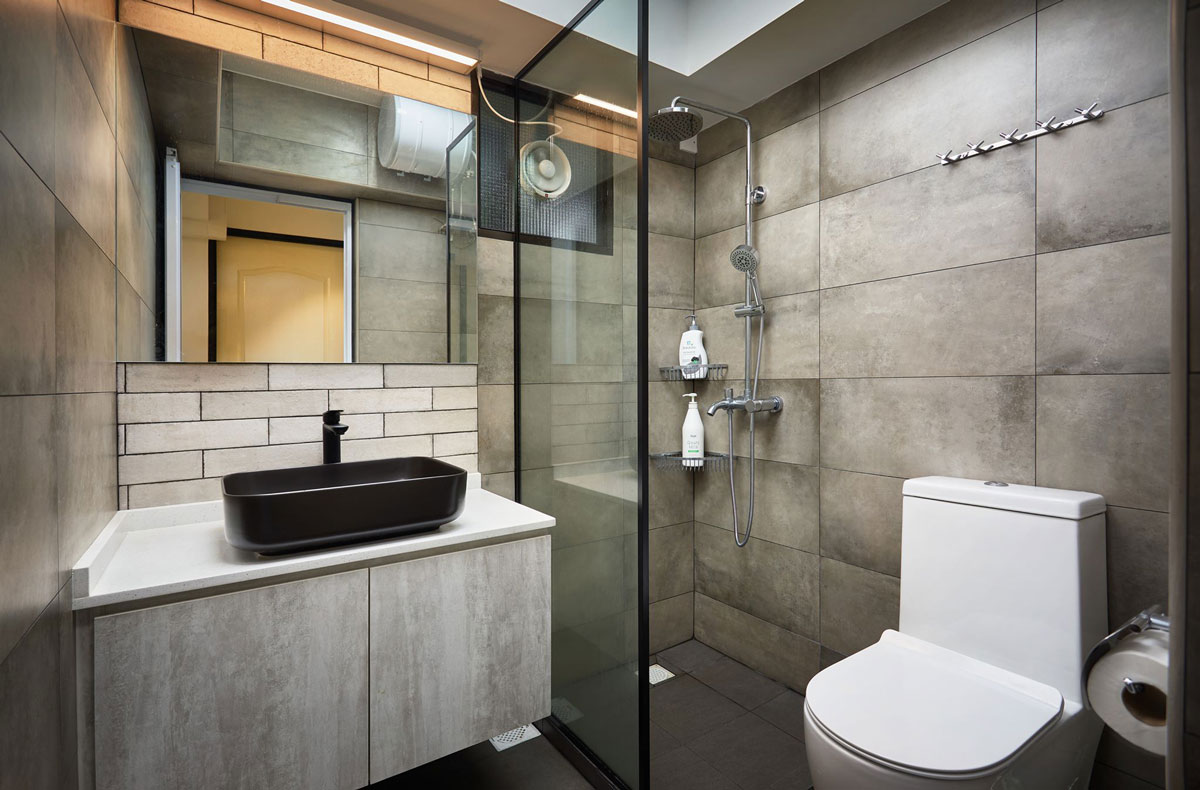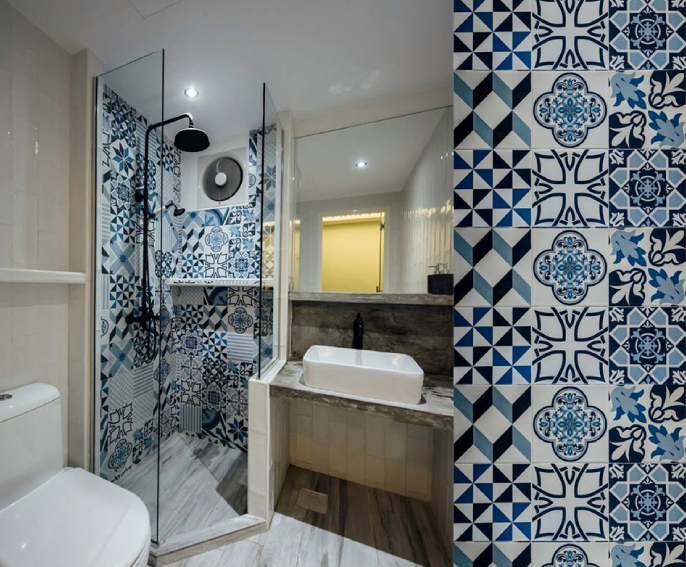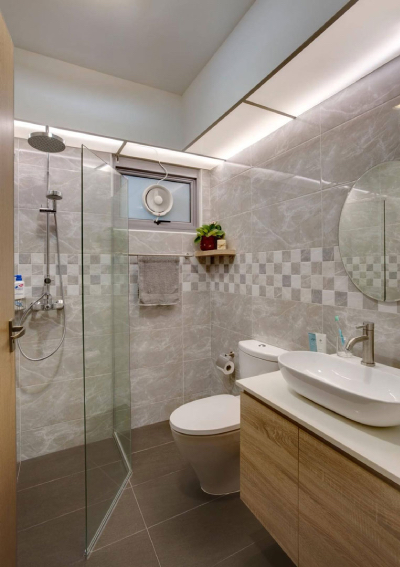5 things you need to know before getting a bathroom exhaust fan


Mildew and mould growth in a bathroom often arises because of excess humidity and moisture in the air, which usually stem from hot showers.
In Singapore, the problem is particularly pressing because of how humid our environment is, making it difficult for moisture in the bathroom to dissipate even if you open your bathroom window.
To help move the process along, consider installing a bathroom exhaust fan.
Besides drying your bathroom quicker, a bathroom exhaust or ventilation fan can also help to extract unpleasant smells and prevent your mirror from fogging up.
Here are some tips we put together to make sure you are getting the right one for your bathroom.
Unless you are living in a private property where you can make modifications to your home’s exterior wall, there are essentially two kinds of exhaust fans you get to choose from: a ceiling mounted one or a window mounted one.
A ceiling mounted exhaust fan is typically mounted on a false ceiling. This type of exhaust fan requires additional ducting to channel the extracted air outside of your bathroom.
They are best installed over or close to the shower or bathtub area as these zones are where the excessive moisture levels are.

Alternatively, consider a window mounted exhaust fan, which is mounted on/over a window opening in your bathroom.
Air is immediately extracted outside, so there isn’t a need for additional ducting.
According to HDB, installing a bathroom exhaust fan is allowed. Approval is not required if there are no changes made to the original bathroom window during the installation of an exhaust fan.
However, there is a need to request for approval if there is a need to modify the window to accommodate the fan. For instance, you might need to cut a hole on your window to fit the exhaust fan.
Or in cases where you wish to replace your louvered window panes with a top-hung casement window to accommodate the fan.

For any window modification works in an HDB flat, you will need to engage a BCA approved window contractor listed with HDB to submit an application to HDB for prior approval before commencement of the work.
Want to get a window mounted exhaust fan but don’t wish to make any changes to your window?
There are exhaust fans that can be installed over a piece of acrylic panel that is custom cut to fit your window opening. The panel is then placed over your (opened) window.
What this means is that you won’t be able to access your window for good. Go for it only if you don’t mind not opening your bathroom window.
Take note that if you are staying in a condominium, installing a window mounted exhaust fan might still be subjected to approval even without any modifications to your window.

When buying an exhaust fan, you will want to consider its CFM. CFM refers to cubic feet per minute.
A bathroom exhaust fan’s effectiveness is determined by how much cubic feet of air it can move per minute. The lower the CFM, the less powerful it is.
It can be complicated to determine how much CFM your bathroom needs, so as a basic rule, just remember that you will need at least 1 CFM for every square foot of your bathroom. This works if you have a standard ceiling height.
To calculate your bathroom’s square footage, multiply the length by the width of your bathroom.
As an example, BTO bathrooms are typically 40 to 50 square feet, which means you will need to get an exhaust fan with at least 50 CFM.
A higher CFM will mean you can dry your bathroom quicker and a lot more effectively.

While this may not be the chief factor when looking out for a bathroom exhaust fan, the noise level emitted by the fan should be of concern as well.
You will typically run your exhaust fan during a shower or after a shower for at least 20 to 30 minutes. An overly noisy exhaust fan would be a huge nuisance to turn on.
Look out for fans that emit less than 50 dB, which is the sound of a moderate rainfall. 40 dB and below is ideal, as that is the sound level of a quiet library.
This article was first published in Renonation.